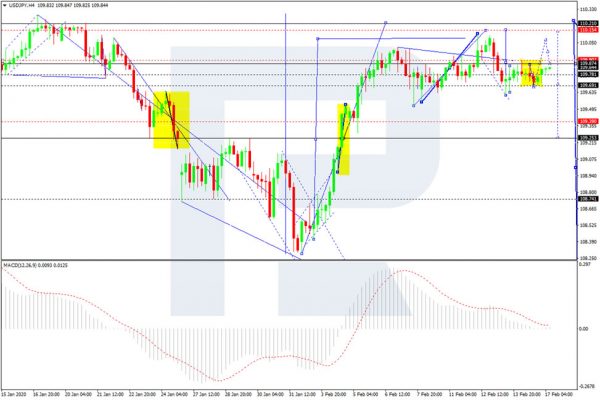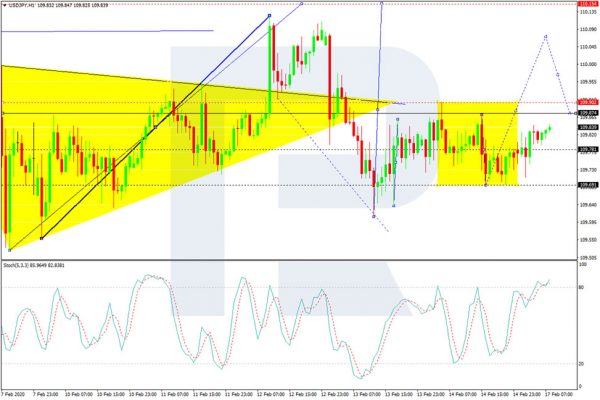On Monday, February 17th, USDJPY is slowly growing and trading close to 109.84. The Yen has been weak for the second trading session in a row.
The statistics published today showed that the Japanese GDP lost 1.6% q/q in the fourth quarter of 2019 after adding 0.4% q/q in the previous quarter and against the expected reading of -1.0% q/q. On YoY, the indicator dropped 6.3%, although it was expected to expand by 3.7%.
The components of the report show that private consumption lost 2.9% against the expected decline by 2.0%. The private consumption covers almost 60% of the GDP, that’s why its decline has a negative influence on all other aspects.
The Japanese export lost 0.6%, while the import added 0.3%. Both readings are quite weak.
It looks like the current QE program supported by the Bank of Japan is no longer working as it should, as it obviously can’t provide enough support to the country’s economy. In some particular cases, it helps to keep the inflation rate in balance but nothing more. This might become a very serious problem for both the Bank of Japan and the government.
As we can see in the H4 chart, USD/JPY is consolidating around 109.78. If later the price breaks this range to the upside, the instrument may form one more ascending structure towards 110.15; if to the downside – start another correction with the target at 109.25 (an alternative scenario). From the technical point of view, the alternative scenario is confirmed by MACD Oscillator: its signal line is moving close to 0. After the line breaks 0, the price may boost its decline.

In the H1 chart, USD/JPY is moving upwards. Possibly, the pair may reach 109.90 and then form a new descending structure towards 109.78, thus forming another consolidation range. If later the price breaks this range to the upside, the instrument may resume growing towards 110.05; if to the downside – start another decline with the target at 109.50. From the technical point of view, this scenario is confirmed by Stochastic Oscillator: its signal line is moving above 80 and about to start falling. After breaking 80, the line may fall towards 50, thus indicating the price chart decline.



 Signal2forex.com - Best Forex robots and signals
Signal2forex.com - Best Forex robots and signals




